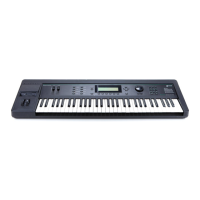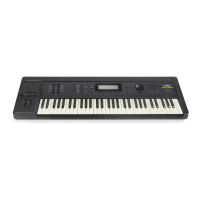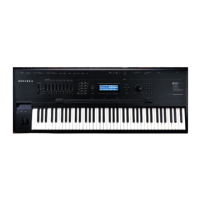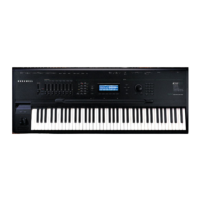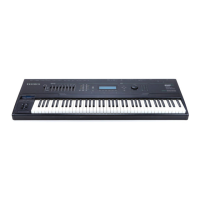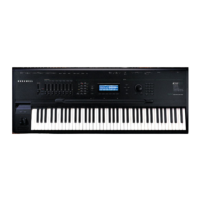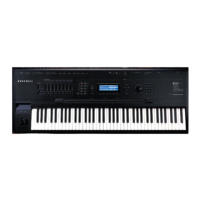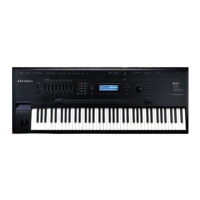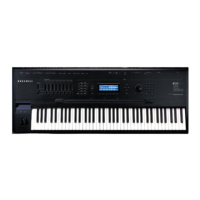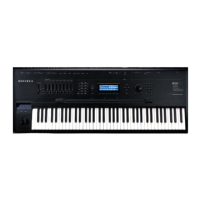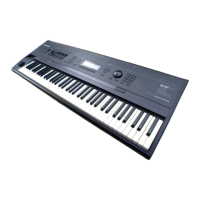4-28
Disk Mode Enhancements in Version 3
Saving Files
The object IDs shown in the table are the same numbers that those dependent objects used at the
time this file was saved. (The ID numbers are necessary in order for Relink-by-Name to
function, since they are the "link" between the higher level objects and the names of the
dependents.)
An important thing to notice about this name table is that the sample names are not needed by
the K2000 for relinking purposes. In fact, the only information necessary for relinking the
dependent objects of this file is the keymap object. The reason for this is that when this file
containing the program is loaded, all of these dependent objects should already have been
loaded, and the keymap should already be correctly linked to the samples. Although the
samples' names are redundant from the K2000's point of view, they are included for free, so to
speak, and you may find them very helpful if you ever need to know exactly what the
dependents of this file were intended to be.
The Name Table Contents List is scrollable if there is object data past the seven lines that fit on
the screen.
Now that the two files STWAVE1.KRZ and STWAVE2.KRZ have been created using the name
table, they can be loaded back in and correctly relinked. In fact, if you were to immediately
reload just the file containing the program (STWAVE2.KRZ) , into any bank, you would find
that it was automatically relinked to the correct keymap.
Furthermore, you could edit the program and create more variations of it that reference the
Steinwave Piano keymap, add ROM layers, with new effects programs if desired, and resave all
of the programs (and any effects) to the same or a new file (remember to press Names when you
are asked
Save|dependent|objects?.) You never have to resave the file STWAVE1.KRZ
that contains the keymap and samples, if all you have done is edited the programs or added
more of them. This can be a tremendous time-saver.
If the keymap and Sample files are found on a CD-ROM disk, then using Relink-by-Name is not
only a time-saver, but a disk space saver as well. If you like the samples and keymaps from a
CD-ROM file, there is no need to duplicate the sample data on your own writable hard drive.
Instead, all you have to do is save a program file in the above manner, and then make sure the
CD-ROM file is loaded first before you load the program file.
If you needed to add some sample data to the file (for instance, you want to add a root to the
keymap or process and reloop a sample from the CD-ROM), you can do this by explicitly
selecting the new sample data and the keymap for saving along with the program and the name
table. Then, the new sample would not be listed in the name table (it would be in the same file as
the name table), and the keymap would be relinked to all of the samples by name instead of the
program being relinked to the keymap (as before). What you put in the different files is up to
you, and there is no limit to where you can break up the objects in one file or another. The main
thing to be aware of are the two rules for Relink-by-Name mentioned above:
1. Always use unique names for like objects types.
2. Files containing dependent objects must be loaded first.
As you will see later, you can create a macro file that will automatically load both of the files in
the correct order, no matter what drives they are on or what disk directories they are in. By using
macro files in this way, you can avoid having to explicitly load 2 files and remember the correct
order each time.
You can also use the Multiple Object Selector (described in the next section) to help in the
process of identifying dependent objects and parent objects that you want to place into separate
files. For instance you could easily select all dependent Keymaps and Samples of any group of
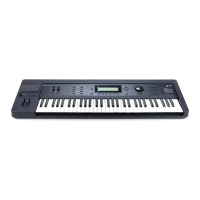
